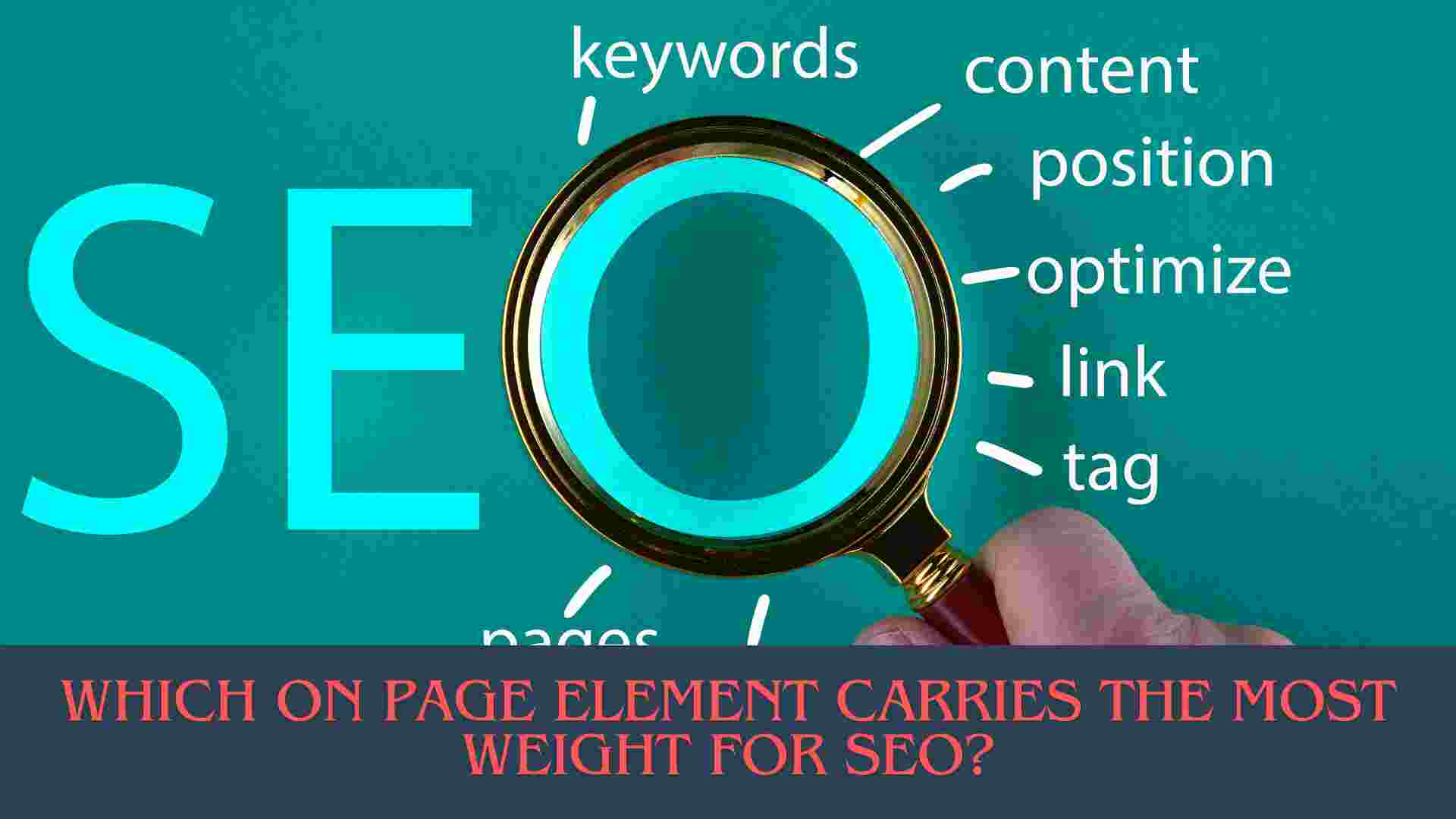which on page element carries the most weight for seo?
Search engine optimization,In this article, learn about page elements that matter most, how to determine what is most important, and get practical tips, too, for enhancing content performance.
What is On-Page SEO?
The process of optimizing each web page’s HTML source code and content is known as “on-page SEO.” This guarantees that search engines like Google can comprehend your content with ease, rank it for pertinent queries, and provide consumers with the greatest experience possible.
Important elements of on-page SEO consist of:
- Relevance and quality of content
- Meta tags (meta description, title tag)
- URL structure
(H1, H2, etc.) Headings and subheadings - Internal linking 6. Optimization of images
- Speed of the page and mobile friendliness
The Most Crucial On-Page SEO Component
When it comes to search engine optimization (SEO), the title tag is king. The primary reason for this is because it has a direct impact on both the user’s CTR and their rank in search engine results. When a person looks for a certain query, search engines view the title tag as one of the principal variables to represent the content of that page.
The Reason the Title Tag Is the Most Important
- Pertinence to Search Terms – Search engines frequently look at the title tag first when assessing a page’s relevancy to a query.
- Google is informed that your page meets the search intent when you include the major term, for example, “which on-page element carries the most weight for SEO”.
An optimized title tag encourages readers to click on your link. This has an impact on Click-Through Rates (CTR). Improved ranks are generally the result of higher CTR.
- For instance, a headline such as “which on page element carries the most weight for seo? Compared to a generic title, “Discover the Secrets!” is more enticing.
- Search Engine Display – In search results, the title tag is usually shown as the clickable headline by search engines. A well-written title guarantees more exposure and interaction.
- Keyword Placement and Density – The title tag is an important region to pay attention to since keywords there have more value than those in other parts of the page.
How to Make Your Title Tag Work Better
- Make sure to include your main keyword.
Put your primary keyword close to the start of the title, for example, “which on-page element carries the most weight for SEO”. - Keep It Concise – To prevent truncation in search results, keep your title tag to 50–60 characters.
“which on page element carries the most weight for seo?
- Make It Descriptive and engaging – By matching user intent, an engaging title lowers bounce rates and increases click-through rates.
- Avoid Keyword Stuffing – Using too many keywords will lower ranks and give your title tag a spammy appearance.
Other Essential On-Page SEO Components
Although the title tag is the most important component, other on-page components are equally important for enhancing your SEO.
Meta Description
Your page’s content is briefly described in the meta description. It affects CTR even though it isn’t a direct ranking element.One of the recommended practices is to incorporate the core keyword.
Please limit it to 120–160 characters.
Compose a captivating description that corresponds with the user’s intention.
Headings (H1, H2, H3, etc.)
Your information will be easier for readers and search engines to grasp if it is organized using headings.
Optimal Methods:
For the main title, use the H1 tag and add your major keyword.
Subtopics should be logically arranged using H2 and H3 tags.
Make sure the headers are pertinent and informative.
Relevance and Quality of Content
In SEO, content is still king. High-quality, relevant, and thoroughly researched information is given priority by search engines.
Best Practices: – Pay close attention to providing thorough answers to customer inquiries.
Make natural use of both major and secondary keywords.
- Preserve a coherent structure and flow.
Structure of URLs
URLs provide you another chance to include keywords, which increases the page’s relevancy.
Optimal Methods:
Make use of brief, informative URLs.
Steer clear of superfluous parameters or symbols.
<www.example.com/on-page-seo-title-tag` is an example.
Linking Internally
Internal links enhance navigation and help spread link equity throughout your website.
Using descriptive anchor text to link to similar sites is one of the best practices.
Steer clear of packing sites with too many links.
Optimization of Images
Although they improve user experience, images need to be SEO-optimized.
Options for Best Practices: – Make use of keywords in alt text and descriptive file names.
Reduce the size of photos to increase page performance.
Add captions as appropriate.
Mobile-Friendliness and Page Speed
Websites that load rapidly and function efficiently on mobile devices are given preference by Google.
Best Practices: – To find problems, use tools like Google PageSpeed Insights.
Reduce server times, enable cach, and img optimize .
For flawless mobile usability, make sure the design is responsive.
User Experience (UX)
Websites that offer a great user experience are favored by search engines.
Optimal Procedures: – Keep navigation clear.
Make use of a clear and legible layout.
The Significance of a Holistic Approach
Even if the title tag is the most important element, SEO success cannot be ensured by concentrating only on it. A strong approach is ensured by optimizing every component of on-page SEO, which is a team effort.which on page element carries the most weight for seo?
